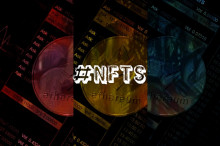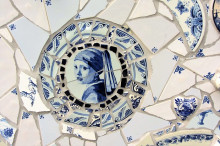IP in the news
Ai-Da the robot artist released by the Egyptian border guards
A British-built robot that uses cameras and a robotic arm to create abstract art has been released after Egyptian authorities detained it at customs.
Ai-Da, named after mathematician Ada Lovelace, was seized by border agents last week who feared her robotics may have been hiding covert spy tools.
Officials held the robot for 10 days, imperilling plans to show her work at the Great Pyramid of Giza on Thursday.
The UK's Embassy in Cairo told the BBC that it is "glad" the case is resolved.
Banská Bystrica has joined the European Network of ‘Authenticities’
On 29 September 2021, the city of Banská Bystrica (Slovakia) became the fifth certified ‘Authenticity’, following the Authenticities of Thessaloniki, Sofia, Plovdiv and Mykonos.
The greatest ever Porsche art cars: The very best from the past six decades
Porsche have gathered the finest art cars from across the years in order to pay homage to the talented creatives that made them a tangible reality.
In light of the stunning 968 L’ART car’s release, Porsche chronicles some of the finest examples of their art cars – from 911 to Taycan to 356 – and discovers that it takes a lot more than just a fresh lick of paint to turn them into landmark pieces of automotive art.
968 L’ART by L’Art de L’Automobile
NFT beats cheugy to be Collins Dictionary’s word of the year
The abbreviation of ‘non-fungible token’ tops a shortlist also including pingdemic, climate anxiety and metaverse
In a year that has seen the musician Grimes sell a collection of digital artworks for almost $6m (£4.4m), and the original photo behind the 2005 Disaster Girl meme go for $473,000 (£354,000), Collins Dictionary has made NFT its word of the year.
TARANTINO’s NFTs
Estonian artist Konrad Mägi’s painting sells for a record price in Sweden
Estonian artist Konrad Mägi’s painting “Rome” sold for €302,000 at the Swedish auction house, Bukowskis – a new record for Estonian art.
Mägi’s “Rome” was on the auction for an estimated price of €35,000, but its hammer price exceeded the estimate for almost ten times. The painting had once belonged to Aleksander Varma – a former prime minister of the Estonian government in exile.
Another of Mägi’s painting, untitled, was also sold – for €238,000. According to Bukowskis, both works were probably made during the early 1920s.
Artificial Intelligence in plays a vital role in arts but can it also hijack art history?
Art history is important to reflect and help to create a culture’s vision of itself. Studying the art of the past teaches everyone how people have seen themselves and their world, and how they want to show this to others. Artificial Intelligence in art was not initially applied as a creator but as an impersonator. The technique is called style transfer and it uses deep neural networks to replicate, recreate and blend styles of artwork, by teaching Artificial Intelligence or AI to understand existing pieces of art.
Prado museum downgrades Leonardo's $450m Salvator Mundi in exhibition catalogue
Publication for Mona Lisa show puts the painting in category of works that are attributed to, or authorised or supervised by the Renaissance master
The Salvator Mundi, which sold for $450m at Christie’s as a fully authenticated Leonardo, has been downgraded by curators at the Prado. It was bought in November 2017 by the Saudi culture minister, Prince Badr bin Abdullah, apparently for the Louvre Abu Dhabi.
The Girl With a Pearl Earring’s Lavish Jewel May Be a Fake
What's happening under the surface of the Dutch painter's canvases offers insights into his enigmatic oeuvre.
The Sphinx of Delft is a fitting moniker for Johannes Vermeer, the 17th-century Dutch artist about whom, despite his wild fame, so little is actually known. His oeuvre was small—only 36 extant works are known or agreed upon— but over the course of the centuries intervening since his death in 1675, it has sparked seemingly boundless fascination, speculation, and analysis.









